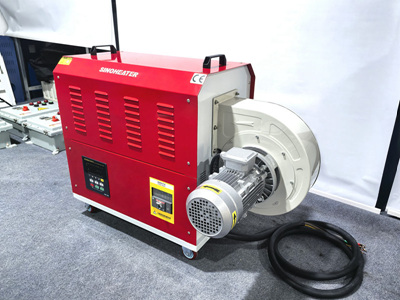Effective Heating Techniques for Chip Removal and Soldering Using Hot Air Guns in Circuit Board Repair
Temperature and Airflow Calibration for Chip Removal
Optimal Temperature Ranges:
When removing surface-mount chips (e.g., QFP, BGA), set the hot air gun to 300–400°C for lead-based solders and 350–420°C for lead-free alternatives. Lower temperatures may fail to melt solder joints efficiently, while excessive heat risks damaging the circuit board or adjacent components.
Airflow Control:
Adjust the airflow to 2–3 levels on most hot air guns. High airflow can displace small chips or blow away nearby components, whereas insufficient airflow may result in uneven heating. Position the nozzle 2–3 cm above the chip and move it in a circular motion to distribute heat evenly.
Heating Duration:
Heat the chip for 45–60 seconds, observing for solder reflow (indicated by bubbling or a slight lift in the chip). Use a magnifying glass to check for uniform melting of solder joints. Avoid prolonged heating to prevent delamination of the circuit board’s fiberglass layers.
Precision Heating for Different Chip Packages
BGA Chips:
For ball grid array (BGA) chips, apply heat evenly across the entire package. Use a diffuser nozzle to spread heat uniformly. After heating, gently pry the chip with tweezers while applying slight upward pressure. If resistance occurs, reheat for 10–15 seconds.
QFP and SOIC Chips:
Focus heat on the outer leads first, gradually moving inward. For quad flat package (QFP) chips, heat each side for 10–15 seconds before attempting removal. Small-outline integrated circuit (SOIC) chips require less heat due to their smaller size; 30–40 seconds of heating is typically sufficient.
QFN Chips:
Quad flat no-lead (QFN) packages have exposed ground pads that require careful heating. Preheat the board to 100–120°C to reduce thermal stress, then concentrate heat on the chip’s perimeter. Use a fine-tip nozzle to avoid overheating the central pad, which may cause warping.
Post-Removal Cleaning and Inspection
Solder Residue Removal:
After chip removal, clean the board with isopropyl alcohol (99%) and a soft brush to eliminate flux residue. For stubborn solder, use a desoldering braid or wick with a low-temperature soldering iron. Avoid abrasive tools that may scratch the circuit board.
Pad and Via Inspection:
Examine the exposed pads and vias under magnification. Look for lifted pads, damaged traces, or residual solder balls. Repair lifted pads by applying epoxy adhesive and reattaching the pad with conductive paint. For damaged traces, use jumper wires or conductive pens.
Component Replacement Preparation:
Before soldering a new chip, apply a thin layer of no-clean flux to the pads. This improves solder flow and reduces oxidation. For BGA chips, use a stencil to apply solder paste evenly. Align the chip using a microscope or alignment jig to ensure precise placement.
Soldering Techniques:
When soldering the new chip, use the hot air gun to reflow the solder paste. Heat the board from underneath (if possible) to promote even melting. For through-hole components, combine hot air heating with manual soldering for reliability.
Thermal Management:
During repairs, monitor the board’s temperature to prevent overheating. Use thermal tape to protect heat-sensitive components (e.g., polymers, electrolytic capacitors). Allow the board to cool naturally after soldering to avoid thermal shock.
By mastering temperature calibration, package-specific heating, and post-removal cleaning, technicians can achieve reliable chip removal and replacement while minimizing damage to circuit boards.



